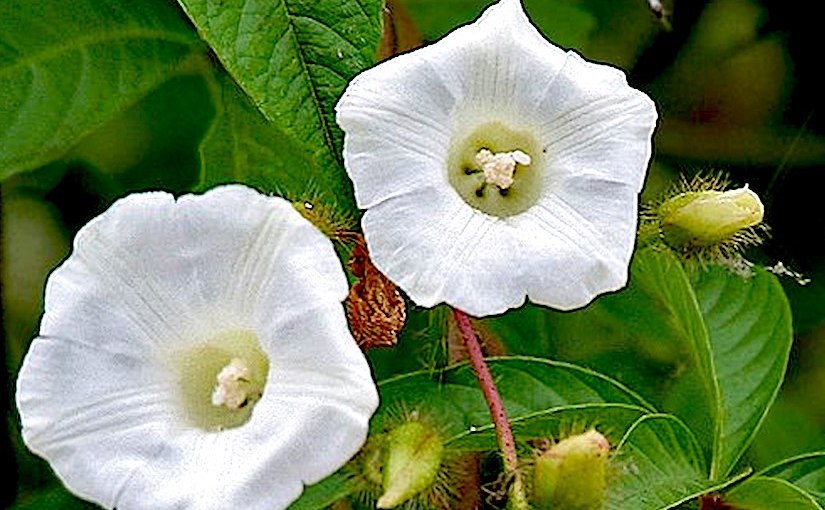Photo credit : Google
Merremia aegyptia (Convolvulaceae)
Effect of different sugars on stomatal behaviour in Merremia aegyptia (L.) Urban and M. dissecta Hallier F.
by Sharma S. S., Sen D. N. (1976)
Botany Department University of Jodhpur, Jodhpur (Raj.), India
=======================
in Biol. Plant. 18: 81-87 – https://doi.org/10.1007/BF02923141 –
https://link.springer.com/article/10.1007/BF02923141
Abstract
The effect of mannitol, glucose and sucrose on the stomatal behaviour of two desert species, Merremia aegyptia andM. dissecta has been studied.
Stomatal opening did not uniformly depend on the decrease in turgor of the epidermal and subsidiary cells caused by the different osmotic potential of the sugars. Sucrose caused plasmolysis of the subsidiary cells only but this was not accompanied by the opening of the stomatal pore.
In M. aegyptia, no plasmolysis was seen either in epidermal or subsidiary cells, even the stomata opened; in M. dissecta, on the other hand, plasmolysis occurred in these cells without any stomatal opening, after incubation in glucose or mannitol.
Mannitol is least absorbed, glucose slightly more and sucrose is absorbed to a very large extent in the guard cells when the materials were incubated in the respective sugar solutions. However, the absorption of these three sugars was almost always larger in isolated epidermal strips than in discs; in detached intact leaves it was still more reduced.
